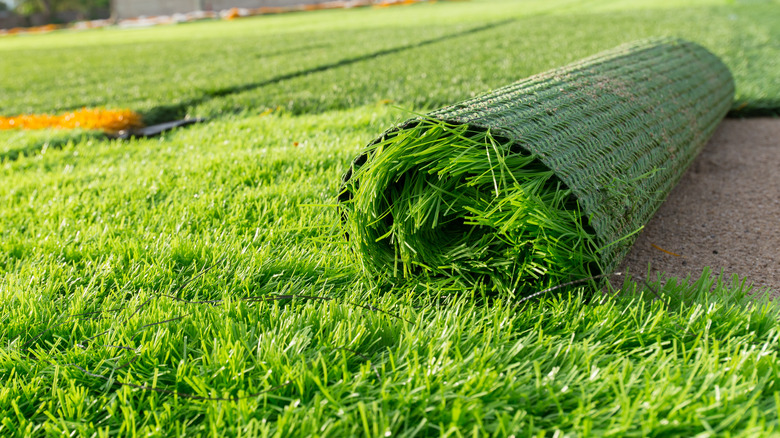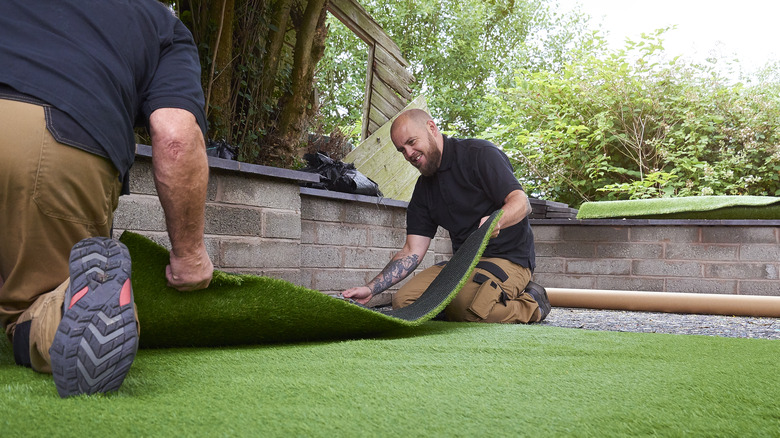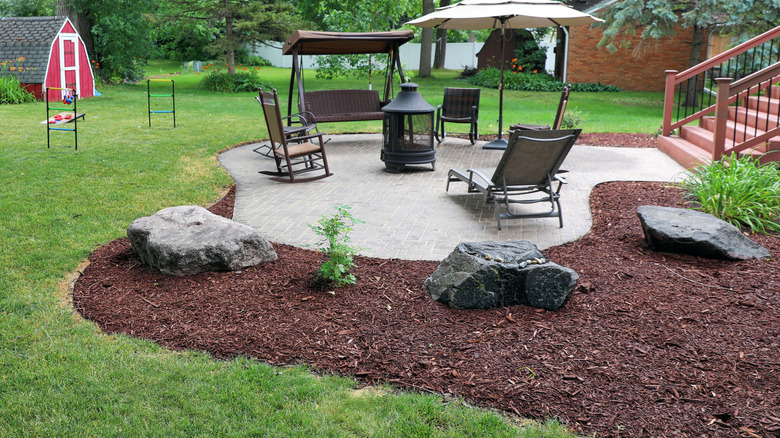Why Artificial Grass Is Not The Best Option For Your Lawn (Or The Planet)
Many of us vie for bright, healthy green grass, but depending on our location and climate, plus our ability to maintain it, having perfect, real grass is not always in the cards. Even if we feel we are doing our best, there are surprising ways we may be killing our grass without even knowing it. To avoid grass woes completely, you may be considering artificial grass. But while turf or faux grass may seem appealing, it's not the best option for your lawn due to its negative impact on the environment and the chemicals it produces.
While you can create an eye-catching backyard without grass, most front yards and backyards have at least some green space that needs to be maintained. Opting for the faux variety means choosing something that is made entirely of plastics. When exposed to natural elements like heat and rain, artificial grass will also release chemicals into the air, making it not only unsafe for the environment but also a poor choice for those with pets or kids who regularly play outside. If you are considering artificial grass, here's why you may want to reconsider.
Artificial grass is bad for the environment and health
There are a lot of pros and cons with artificial grass, with the pros leaning toward things like aesthetics and maintenance. But when you look at the bigger picture, artificial grass, while pretty at first, can actually be negatively impacting the environment and your family. That negative impact starts before the installation is even complete. The first step in the installation process involves flattening the ground by using gravel and plastics. This method eliminates the ability for plant roots to grow, which leads to stormwater runoff and higher rates of flooding after a storm. Once the faux grass is complete, it prevents insects and worms from finding the soil beneath, creating a block in the food chain.
Without natural vegetation like grass to help reduce carbon dioxide, and with the increased amount of solar radiation that artificial grass absorbs compared to natural grass, artificial grass also contributes to global warming. Plus, while one of the big selling points artificial grass companies promote is its ability to last for a decade without replacement, once that 10 years is up, the disposal of the turf is often sent to a landfill, creating even more environmental issues after it is gone.
But it's not just the environment that is at risk. The materials used in artificial grass release harmful chemicals that can be dangerous for humans, particularly young children. Artificial grass is also more prone to overheating in warm temperatures, potentially causing injury or making it unusable in the summer months.
Artificial grass alternatives to consider
Artificial grass can give us the look of real grass, but unfortunately, the cons outweigh the pros. If you want a grassy lawn, going natural is your best bet. Not only does natural grass allow a food source and habitat for many living creatures, but it also releases oxygen and reduces carbon dioxide. To make your natural lawn more environmentally friendly, consider mowing it less, avoiding cutting out weeds and instead letting them grow, and even waiting for a rainstorm to fix your brown lawn rather than watering it yourself.
If a wild lawn is not in your wheelhouse, there are alternatives to grass that are not artificial. Consider planting ground cover plants instead of grass in your yard, using a species that is native to your area, for a lawn that is maintenance free and environmentally friendly. In smaller areas, you can also opt for mulch, gravel, or even a rock garden for an aesthetically pleasing and low-maintenance alternative that won't harm your family or the environment.


